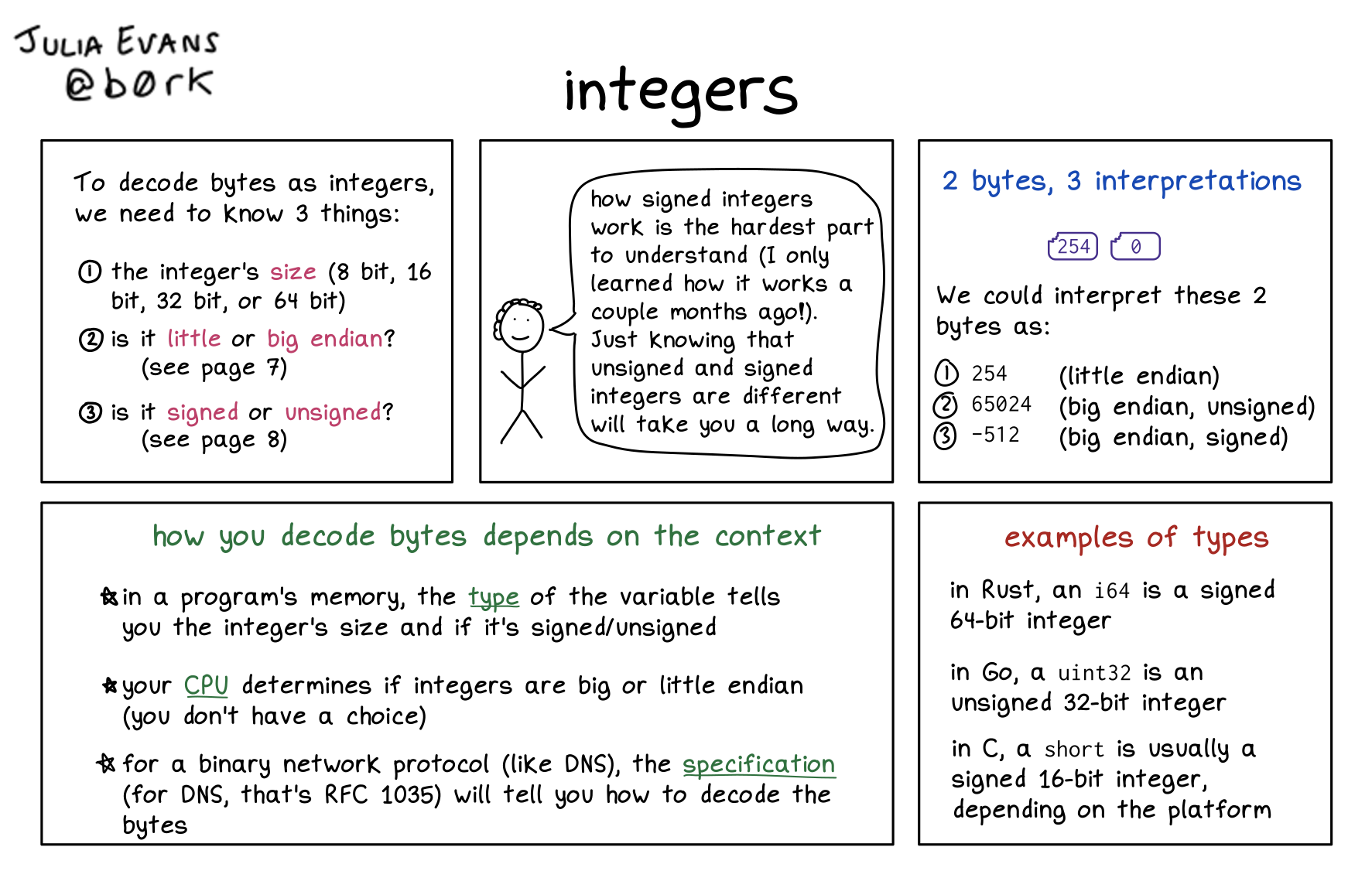
Here's a preview from my zine, How Integers and Floats Work! If you want to see more comics like this, sign up for my saturday comics newsletter or browse more comics!
 get the zine!
get the zine!
read the transcript!
integers
panel 1:
To decode bytes as integers, we need to know 3 things:
- the integer’s size (8 bit, 16 bit, 32 bit, or 64 bit)
- is it little or big endian?
- is it signed or unsigned?
panel 2:
how signed integers work is the hardest part) to understand (I only learned how it works a couple months ago!). Just knowing that unsigned and signed integers are different will take you a long way.
2 bytes, 3 interpretations
254 | 0
We could interpret these 2 bytes as:
254(little endian)65024(big endian, unsigned)-512(big endian, signed)
how you decode bytes depends on the context
- in a program’s memory, the type of the variable tells you the integer’s size and if it’s signed/unsigned
- your CPU determines if integers are big or little endian (you don’t have a choice)
- for a binary network protocol (like DNS), the specification (for DNS, that’s RFC 1035) will tell you how to decode the bytes
examples of types
- in Rust, an
i64is a signed 64-bit integer - in Go, a
uint32is an unsigned 32-bit integer - in C, a
shortis usually a signed 16-bit integer, depending on the platform